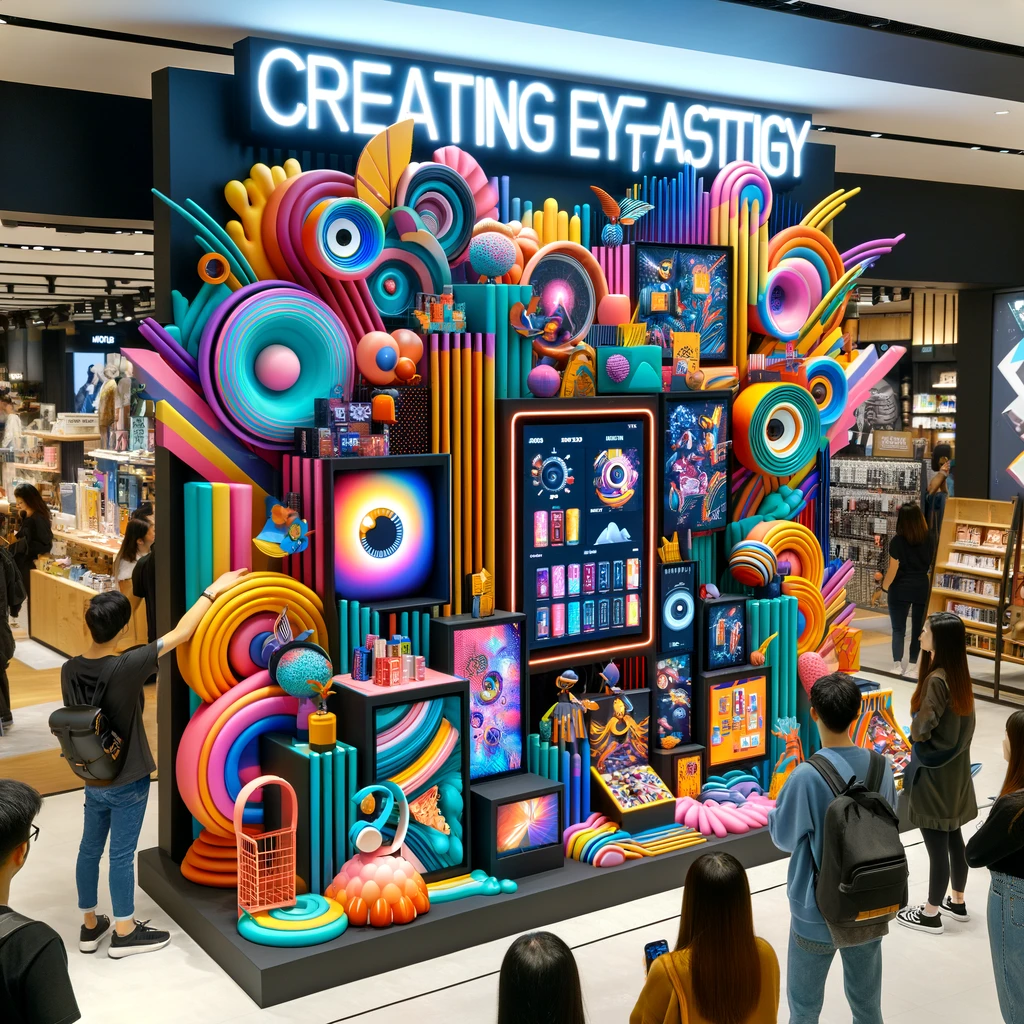As a shop, you employ a variety of resources to entice customers to enter through your doors. However, while traffic is important, it is only the beginning: what can you do to drive revenue once they enter?
Artful display is insufficient; certain things satisfy a need so perfectly that they sell themselves, but this is uncommon. Rather than relying on chance or intrinsic sales aptitude, there are several effective selling strategies you can educate your employees and/or implement yourself.
Here, we’ll look at 19 sales tactics to help you sell your products. Whether you’re a newbie or an experienced salesperson, these strategies can help you increase sales, revenue, and client loyalty.

1. Sell Solutions To Pain Points
Instead of emphasizing a product’s cost, describe how it will benefit the user and improve their quality of life. How useful or fun is it? How can it address a particular issue?
By emphasizing value over technical product expertise, you can steer clear of offering discounts solely to shift inventory. It will also assist you in informing them about the special qualities and advantages of each product.
As an illustration, “This skincare bundle includes everything you need for your morning and evening skincare routine, including a face cleanser, toner, and oil.” Next, depending on the demands of the customer, you can go into detail about each product’s advantages as well as how well they complement one another for particular skin types.

2. Focus On Quality Conversations With Quality Customers
Instead of engaging in pointless chats like the weather, get to know possible clients. This kind of sales talk serves as an introduction to your pitch and lets you go more into the problems that a prospect is facing (more on that later).
Do you need help deciding how to strike up a conversation? To start a fresh conversation with a consumer, try these open-ended questions:
- In what way may I assist you?
- Why did you visit our website/store today?
- For whom are you shopping?
3. Understand Your Customers
Customers frequently express concerns about products within a few minutes of a sales conversation. A great salesperson uses this as a hint to tailor their sales strategy. If a customer informs you during the first chat that they are having trouble finding a baby carrier that won’t strain their back, empathize with them. Explain that you had two small children and went to the doctor for back pain.
According to Vintage Diamond Ring CEO Suzanne Sachs, “Any business can have a logo and a product, but it falls into a different category when a consumer can turn to a company and know their purchases say something about who they are and what matters to them.” You may enter their universe when you establish that kind of connection with them.

4. Offer Product Demos
If a customer is unclear about how a new product operates, they may be reluctant to buy it. Draw inspiration from television shopping channels and pique a prospect’s interest by showing them how to utilize the thing they are considering purchasing.
For example, if you are selling cleaning supplies, have a little tile that you can use to splatter oil on. Take out the tile and give it a mist of your cleaning solution. Demonstrate to them how effective it is in removing stubborn oil from their kitchen. They can already see how it will simplify their lives.
Even better, ask them to test the product on their own if they aren’t paying attention. Eighty-one per cent of customers are willing to spend more for this kind of experience retail.
5. Give Free Samples
Consider developing scaled-down versions of your offering and offering them for free if you don’t have a product or service to showcase. Costco and other wholesalers have popularized this sales tactic because it demonstrates to potential customers why they should part with their hard-earned money with you.
Free samples, according to Lucy Nash co-founder Hannah Nash, “will allow customers to interact with the product and get a taste of what they’re buying.” Furthermore, it’s an excellent method of creating word-of-mouth advertising because satisfied customers are more inclined to tell their friends about the product.
“After the customers interact, a great way to increase sales is to provide stories on satisfied customers,” Nash explains. “This illustrates that you are more than just a retailer; you go above and beyond for your clients. It fosters trust, and people are more likely to purchase from someone they know.”

6. Developing Powerful Connections with Customers
Building a successful client connection requires being open about product constraints and cost. These are some of the main reasons buyers are hesitant to purchase certain products. When salespeople are truthful in all of their interactions with customers, it helps to develop brand trust. Trust is the foundation of the business-to-customer relationship.
Shoppers are 25% more likely to continue purchasing products from trusted brands. Continuous, honest involvement will help your company establish a devoted consumer base.

7. Increasing Referrals
Positive shopping experiences increase a company’s likelihood of being recommended to friends and family by customers. Additionally, clients that have faith in your company will recommend it to others. Because clients who recommend your business are likely to write favourable evaluations, this procedure plays a major role in the success of your retail business.
A whopping 95% of consumers look for reviews before purchasing from a company. This continuous interaction between your company, clients, and prospective clients will be crucial to the success of any online store or platform.
8. Enhancing the In-Store Experience
Another method of engaging customers is the in-store experience. You want visitors to take their time browsing. This entails establishing a sensory-rich setting with suitable lighting, calming music, and more mood-enhancing elements.
Space and aesthetic appeal are valued by customers. As a result, your business should be well-organized with attractive product displays placed in key locations. In addition, sales representatives must engage with clients cordially, offering advice and details on products.

9. Utilizing Technology for Personalized Interactions
Keeping clients involved in your store also depends on technology. Foot traffic sensors can be used to arrange merchandise and allocate workers. Loyalty programs and purchasing histories might help you determine client preferences. To personalize client encounters, consider using digital signage and facial recognition. Smart mirrors, virtual assistants, augmented reality, and personalized greetings are among the other excellent in-store features.

10. Getting the Best Product Placement
Moving things from one shelf to another is frequently an excellent merchandising method. Placing things at eye level rather than hiding them on the bottom shelf can immediately boost sales.
Also, grouping relevant things makes shopping more efficient. Something as easy as adjusting product placement will keep your consumers in your business longer and encourage them to purchase more items.
11. Creating Eye-Catchy Displays
Your product placements and groupings should all ideally be as visually striking as possible. Just make sure you don’t keep them like that for too long. Make changes, add new items in line with the seasons and holidays, and consistently establish a cohesive theme. Use the street-facing window at your store to showcase eye-catching exhibits that entice consumers inside.
Once more, the goal of all merchandising strategies should be to leave customers with positive memories. When the consumer is ready to make a purchase, don’t forget to utilize upselling strategies. First, entice them with a stunning window display. Next, make the purchasing process simple with strategic product placement.

12. Utilizing Cross-Selling and Upselling Techniques
Retailers use cross-selling and upselling strategies to market complementary and higher-end products. However, it is not only about profit. When you upsell a customer, the higher-end product should provide significant value. The same applies to complementary products. They must offer value to the original product. Salespeople should know enough about all items to describe the benefits they provide.
These merchandising strategies are typically used shortly before a consumer is ready to pay for their product, as they are more likely to spend a little more.
13. Consider The Customer Journey
Why do customers still come into your store when they can purchase comparable goods online? because before people purchase a product, they want to see and handle it. They have to get value from that interaction for them to make a purchase. This is the main justification for carefully considering your merchandising strategies. Think about who your target market is and what will most likely appeal to them. After that, start setting up your store and customer support appropriately.

14. Make Your Sales Pitch Flawless
A sales pitch is a brief presentation designed to persuade a potential customer to make a purchase. Use the elevator pitch strategy, which is a two-minute speech that teaches people without overwhelming them with information. Briefly explain your company, who it serves, and why the product or service should be purchased.
Most essential, never disparage a competition during your pitch; this can make prospects uncomfortable. You can benchmark product quality or price and position your company as the better alternative without being overly critical.
15. Never Fail To Follow Up
Persistence is essential in life, as it is in other things. However, the most effective salespeople walk a tightrope between being pushy and being persistent. To convert new consumers, it’s critical to follow up before the sale. It’s also crucial to stay in touch after the sale to promote repeat business.
Don’t come out as desperate while following up. Never give the impression to clients that you are only in it for the money, no matter how badly you may need or want to close the deal to meet your sales targets or expand your company. Customers should always feel as though you are assisting them and adding value rather than expecting them to do the heavy lifting.

16. Putting Customer Analytics and POS Systems in Place
Point-of-sale (POS) systems of today offer more functions than merely transaction processing. They gather client information, such as past purchases and product preferences, to assist you in developing focused marketing campaigns. POS data also monitors consumer purchasing trends and behaviour. These analytics can be used to develop dynamic pricing and customized marketing strategies.
17. Using E-Commerce Platforms for Omnichannel Success
Customers also want a seamless purchasing experience, whether they buy things online or offline. An e-commerce platform allows you to connect your real store with a digital one. This means that customers can buy from you at any time, with a wider product variety and the option of picking up in-store or receiving free shipping. An e-commerce alternative also broadens your omnichannel offering, hence increasing revenues.

18. Integrating Social Media for Marketing and Engagement
Making use of social media platforms will help you promote your products and company as well. Customized adverts can be used to target audiences through social media. Even better, you may work with influencers to enlist their support in spreading the word about your products. By doing this, you’ll strengthen your ties with customers and promote brand loyalty.
19. Offering Few Options
Offering a maximum of one or two product options is another effective retail selling strategy. A customer may become overwhelmed and decide not to purchase anything if a salesman offers them ten options to pick from.
Conclusion
Every business, particularly retail businesses, wants to increase their sales effectively. However, numerous businesses are trying hard to increase sales. However, just a few enterprises have seen an increase in sales. The reason for this is that you need to select the correct sale day idea, such as a custom table runner. We hope this post helped you achieve success in the retail industry.







